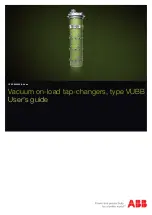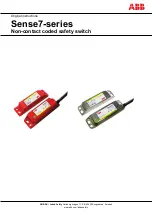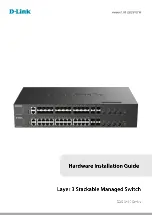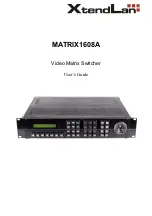
The ATTS is accessible from normal maintenance terminals such as TLWS. The ATTS supports up to 20 schedules
which can run concurrently. The entries in these schedules correspond to scheduled test sessions.
Each schedule is operated independently, with the schedule data base accessible to multiple users simultaneously.
A single time entry in a single schedule, containing a single trunk group to be tested, is considered a
session
. The
ATTS includes only trunk groups as session entries. The ATTS allows schedule cycles of 8 weeks.
The tests start when specified by an entry in a routine test schedule control data table in the ODD. These tests are
done on a scheduled basis by agreement with the administration of a remote exchange. The ATTS implementation
involves an AM-based scheduler.
Test parameters or ``test result analysis thresholds'' determining success or failure of a test call are part of the trunk
group relationships in the data base. These parameters are used for demand testing. Each trunk group relationship
references a set of parameters to be used for testing their trunks.
The number of test sessions available accommodates all trunk groups to be tested for different types of trunk tests.
The exchange allows all trunk groups to be scheduled for testing. Some of these may be tested more than once in 8
weeks.
The telephone administration can specify the number of schedules/directors on a per-exchange basis with a
minimum of 20 concurrent schedules.
3.5.2.2 ATTS Scheduling
The ATTS has a granularity of start time in minutes. Administrations can impose constraining conventions, that is,
schedule sessions in 10-minute steps, thereby scheduling several trunk groups in one hour. However, the
constraints are enforced only by administrative procedures, not by switch software.
Test sessions in a schedule do not overlap. The system prevents maintenance personnel from creating conflicting,
overlapping session assignments. If it is desirable to reallocate part of an existing session, the system may require
that session first be unallocated.
Sessions can be linked together in a ``chain''. A session with a ``chain'' flag starts as soon as the prior session ends,
provided the stop time of the first session exactly matches the start time of the second session. A session always
stops at its assigned stop time, or earlier if all trunk group members have been tested.
Schedule data is entered per session, with each session representing a trunk group to be tested. For each test
session, the following must be specified:
Schedule number
Week and day
Start time/stop time (hour and minute)
Type of automatic test
Trunk group to test
First member number
Last member number.
Link indicator (indicating whether to link the session to the previous session)
Skip indicator (indicating whether to skip the test session entry)
235-105-210
October 1999
Copyright © 1999
Page 8
Summary of Contents for 5ESS-2000
Page 96: ...235 105 210 October 1999 Copyright 1999 Page 2 ...
Page 184: ...235 105 210 October 1999 Copyright 1999 Page 3 ...
Page 300: ...13 STOP YOU HAVE COMPLETED THIS PROCEDURE 235 105 210 October 1999 Copyright 1999 Page 55 ...
Page 339: ...7 STOP YOU HAVE COMPLETED THIS PROCEDURE 235 105 210 October 1999 Copyright 1999 Page 13 ...
Page 342: ...235 105 210 October 1999 Copyright 1999 Page 2 ...
Page 359: ...235 105 210 October 1999 Copyright 1999 Page 5 ...
Page 609: ...2 STOP YOU HAVE COMPLETED THIS PROCEDURE 235 105 210 October 1999 Copyright 1999 Page 12 ...
Page 676: ...235 105 210 October 1999 Copyright 1999 Page 9 ...
Page 792: ...3 STOP YOU HAVE COMPLETED THIS PROCEDURE 235 105 210 October 1999 Copyright 1999 Page 9 ...
Page 799: ...Figure 11 36 3 1 Cleaning Points 235 105 210 October 1999 Copyright 1999 Page 7 ...
Page 801: ...235 105 210 October 1999 Copyright 1999 Page 9 ...
Page 839: ...2 STOP YOU HAVE COMPLETED THIS PROCEDURE 235 105 210 October 1999 Copyright 1999 Page 16 ...
Page 999: ...2 STOP YOU HAVE COMPLETED THIS PROCEDURE 235 105 210 October 1999 Copyright 1999 Page 13 ...
Page 1008: ...Figure 11 55 1 CTSNS DIP Switch Settings 235 105 210 October 1999 Copyright 1999 Page 2 ...
Page 1011: ...235 105 210 October 1999 Copyright 1999 Page 5 ...
Page 1053: ...235 105 210 October 1999 Copyright 1999 Page 15 ...
Page 1289: ...Figure 15 17 2 AMATPS Data Link 235 105 210 October 1999 Copyright 1999 Page 2 ...
Page 1292: ...235 105 210 October 1999 Copyright 1999 Page 5 ...
Page 1303: ...9 STOP YOU HAVE COMPLETED THIS PROCEDURE 235 105 210 October 1999 Copyright 1999 Page 2 ...
Page 1360: ...Figure 15 47 2 Typical SCANS III Link Diagram 235 105 210 October 1999 Copyright 1999 Page 2 ...
Page 1372: ...235 105 210 October 1999 Copyright 1999 Page 2 ...
Page 1374: ...235 105 210 October 1999 Copyright 1999 Page 4 ...
Page 1421: ...Table 1 1 O M Checklist 235 105 210 October 1999 Copyright 1999 Page 3 ...
















































